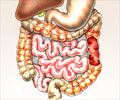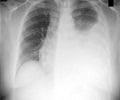Researchers are attempting to get an insight into the relationship between the bacteria that cause tuberculosis and the human immune system defence cells that engulf them, by using sophisticated genetic techniques.
Researchers at Cornell's College of Veterinary Medicine found that unlike many bacterial pathogens, Mycobacterium tuberculosis does not react when immune system cells called macrophages initially make contact; but the bacterium's genes become activated minutes after the pathogen is enveloped by a macrophage and contained in one of its membrane-bound compartments called vacuoles.David Russell, professor of molecular microbiology and his colleagues reported that increased acidity inside the vacuoles containing the bacteria serves as the trigger for M. tuberculosis genes to express proteins.
The study, led by Kyle Rohde, a research associate in Russell's lab, also compared the responses of M. tuberculosis to a live bacterial vaccine against tuberculosis known as Bacillus Calmette-Guerin (BCG).
It found that the two bacteria may each respond differently to the same stimuli and that BCG appears less capable of protecting itself once inside a macrophage. The findings are consistent with the reduced virulence of BCG, which is key to its safety as a vaccine.
The study is a small part of a larger plan to understand the processes that allow the bacteria to survive within macrophages and then to use that knowledge to develop more effective drugs to combat tuberculosis.
"What we propose is the exploitation of the data obtained from these basic science studies to develop a comprehensive program of drug development that targets bacterial processes critical to survival inside the human host," Russell said.
Advertisement
The research team has also created real-time readouts that measure conditions within the tuberculosis-containing vacuole at any time during the immune system's process.
Advertisement
The study is published in the November issue of the journal Cell Host and Microbe.
Source-ANI
KAR/M











